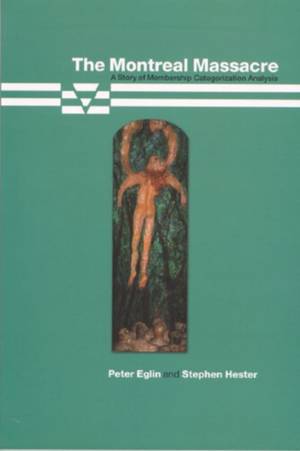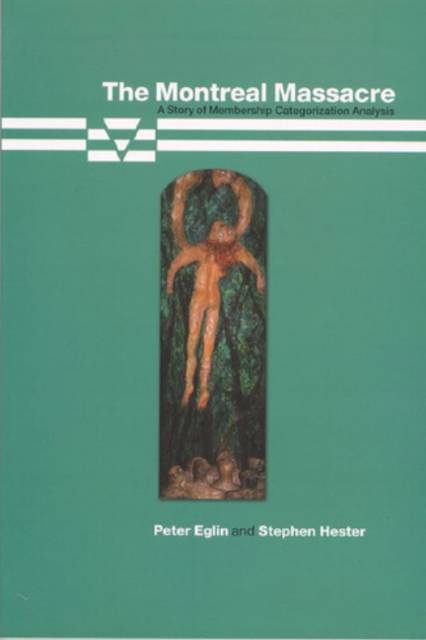
- Afhalen na 1 uur in een winkel met voorraad
- Gratis thuislevering in België vanaf € 30
- Ruim aanbod met 7 miljoen producten
- Afhalen na 1 uur in een winkel met voorraad
- Gratis thuislevering in België vanaf € 30
- Ruim aanbod met 7 miljoen producten
The Montreal Massacre
A Story of Membership Categorization Analysis
Peter Eglin, Stephen HesterOmschrijving
The Montreal Massacre: A Story of Membership Categorization Analysis adopts an ethnomethodological viewpoint to analyze how the murder of women by a lone gunman at the Ecole Polytechnique in Montreal was presented to the public via media publication over a two-week period in 1989. All that the public came to know and understand of the murders, the murderer, and the victims was constituted in the description and commentaries produced by the media. What the murders became, therefore, was an expression of the methods used to describe and evaluate them, and central to these methods was membership category analysis -- the human practice of perceiving people, places, and events as "members" of "categories," and to use these to explain actions.
This is evident in the various versions comprising the overall story of the Massacre: it was a crime; it was a tragedy; it was a horror story. The killer's story is also based on his own categorial analysis (he said his victims were "feminists"). The media commentators formulated the significance of the murders in categorial terms: it implicated a wider problem, that of violence against women, and thus the reasons for the murders were shown to be categorial matters.
As a contribution to sociology, and as a demonstration of the significance of ethnomethodology for understanding social life, the book reveals the methodical and particularly categorial character of how sense is made of events such as this and how such methodical and categorial resources are central to human interaction.
Specificaties
Betrokkenen
- Auteur(s):
- Uitgeverij:
Inhoud
- Aantal bladzijden:
- 168
- Taal:
- Engels
Eigenschappen
- Productcode (EAN):
- 9780889204225
- Verschijningsdatum:
- 9/10/2003
- Uitvoering:
- Paperback
- Formaat:
- Trade paperback (VS)
- Afmetingen:
- 152 mm x 229 mm
- Gewicht:
- 272 g

Alleen bij Standaard Boekhandel
Beoordelingen
We publiceren alleen reviews die voldoen aan de voorwaarden voor reviews. Bekijk onze voorwaarden voor reviews.











